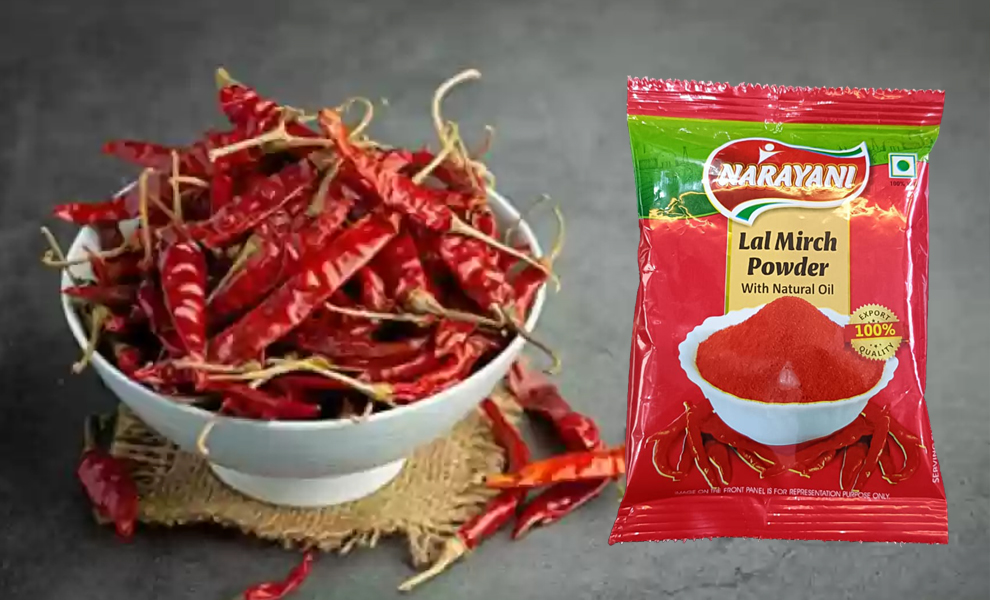
Creating Red Chili Powder on an industrial scale involves several critical steps, from sourcing raw materials to packaging the final product. Here's a comprehensive overview of the entire process from start to finish:
1. Raw Material Sourcing and Inspection:
Sourcing: Obtain dried red chili peppers from reliable suppliers. The type of chili pepper (e.g., cayenne, paprika) will affect the flavor and heat level.
Inspection: Perform quality checks to ensure the chilies are free from contaminants, mold, and pests. This can involve visual inspection and laboratory tests.
2. Cleaning and Sorting:
Cleaning: Remove dust, debris, and any foreign particles from the dried chilies. This typically involves mechanical cleaning systems and air blowing.
Sorting: Sort chilies based on size, color, and quality. This can be done manually or using automated sorting equipment.
3. Roasting (Optional):
Roasting: Roast the chilies to enhance their flavor and color. This step is optional but can add a smoky flavor and deepen the color. Roasting is done in industrial roasters or ovens at controlled temperatures.
Cooling: After roasting, chili's need to be cooled to prevent further cooking and preserve the desired flavor.
4. Grinding:
Initial Grinding: Crush the cleaned (and roasted, if applicable) chilies into smaller pieces using industrial grinders or mills.
Fine Grinding: Use fine grinding mills to pulverize the chili pieces into a fine powder. This may involve several stages to achieve the desired fineness and consistency.
5. Sieving:
Sieving: Pass the ground chili powder through sieves to remove larger particles and achieve a uniform powder size. This helps in ensuring consistency in the final product.
6. Blending (Optional):
Blending: If producing a specific blend (e.g., with additional spices like garlic, cumin, etc.), mix the chili powder with other ingredients. This step ensures that the final product has the desired flavor profile.
7. Quality Control:
Testing: Conduct tests to verify the color, flavor, heat level, and overall quality of the chili powder. This includes checking for contaminants like heavy metals or microbial presence.
Adjustments: Based on quality control results, make necessary adjustments to the grind size or blend to meet product specifications.
8. Packaging:
Filling: Use automated filling machines to transfer the chili powder into packaging containers or bags. Ensure the packaging is done in a clean, controlled environment to prevent contamination.
Sealing: Seal the containers or bags to protect the chili powder from moisture and air, which can degrade its quality.
Labeling: Label each package with necessary information, including product name, ingredients, nutritional facts, expiration date, and storage instructions.
9. Storage and Distribution:
Storage: Store the packaged chili powder in a cool, dry place away from direct sunlight. Proper storage conditions help maintain the quality and freshness of the product.
Distribution: Distribute the packaged chili powder to retailers, wholesalers, or directly to consumers. Ensure that distribution practices maintain the product's integrity and quality.
10. Compliance and Documentation:
Regulations: Adhere to local and international food safety regulations and standards throughout the production process.
Documentation: Maintain detailed records of sourcing, production, quality control, and distribution processes for traceability and compliance purposes.
Equipment Used
1. Cleaning Machines: For removing debris from dried chilies.
2. Roasters: For roasting chilies, if applicable.
3. Grinders/Mills: For grinding chilies into powder.
4. Sieving Machines: For ensuring uniform powder size.
5. Blenders: For mixing spices if blending is required.
6. Packaging Machines: For filling, sealing, and labeling packages.
By following these steps, companies can efficiently produce high-quality Red Chili Powder that meets customer expectations and industry standards.


